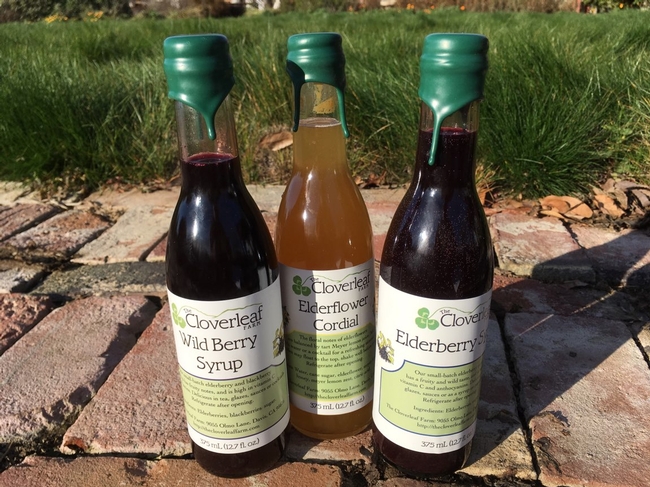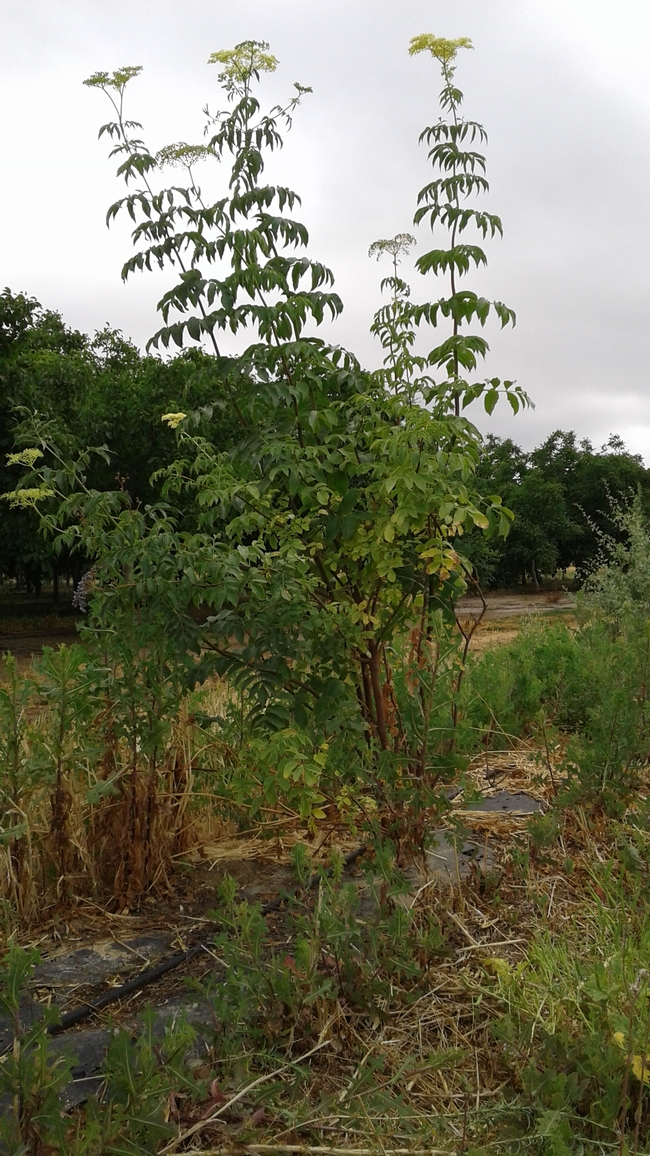Can plants typically grown for hedgerows also be a source of income? That's the question guiding a new UC study on the potential for farmers to grow elderberries as a commercial crop.
Blue elderberry, a California native plant with clusters of small bluish-black berries and a sweet-tart flavor, have long been eaten by Native Americans in the western states and are used today in jam, syrups, wines and liqueurs. And while elderberry orchards are popping up in parts of the Midwest, California's elderberries are usually just grown on field edges, and elderberry products sold retail rely mostly on foraged crops or imports.
Farmers at The Cloverleaf Farm near Davis are already selling elderberry products from plants grown on their farm, alongside their blackberries and stone fruits. And they find that customers love them. The farmers want to understand the viability of growing elderberries for market beyond their nascent effort, bringing some of the out-of-state production home.
The UC Sustainable Agriculture Research and Education Program (SAREP) launched a project in collaboration with the Cloverleaf Farm, the UC Agriculture Issues Center, UC Davis Department of Food Science and Technology, and four Central Valley farmers to assess the farm management practices, nutritional content, and market potential for elderberry and elderberry products in California.
“I think a lot about the long-term systems sustainability of our food system,” said Katie Fyhrie, one of the farmers at the Cloverleaf. “I keep thinking about how much we focus on production of blackberries and blueberries, when the elderberry also achieves that dark berry color and flavor people like with much fewer resources.”
Elderberries are typically grown on farms as hedgerows for their ability to attract beneficial insects, act as a windbreak, and sequester carbon, benefiting the overall health of the farm, but not providing direct benefit to a farmer's bottom line. Despite long-running federal cost-share programs for planting hedgerows, the number planted in California is still quite small relative to the large expanses of farmland in the state. Adding a financial incentive to planting elderberries may help increase the popularity of hedgerows amongst farmers.

As climate change impacts California with heat and unpredictable water availability, some studies suggest farmers may need to consider diversifying the crops they grow to adapt to changing local climates.
Elderberries, which grow in arid California regions along the coast and into the mountains, have the potential to grow in a range of climates and adapt to changing California ecosystems in the future.
It is unlikely that farmers would plant entire orchards of elderberries, in part because of restrictions on pruning elderberries that may be home to the Valley elderberry longhorn beetle, a federally threatened species. But for small- and medium-scale growers looking to diversify their income sources, elderberries may provide a boost.
The two-year elderberry project now underway will conclude with a growers' production guide, cost of production study, an assessment of market demand and nutritional contents, and workshops to help link growers with buyers interested in elderberry products. The project will also address issues related to the Valley elderberry longhorn beetle and generating income from hedgerows.
“Elderberry juice is already in so many products,” Fyrhie said, “so building a market for locally grown elderberries seems like a no-lose situation.”
For farmers interested in learning more about incorporating perennials into annual crop farms and similar agroforestry practices, view a webinar on the topic recently hosted by UC SAREP here.
